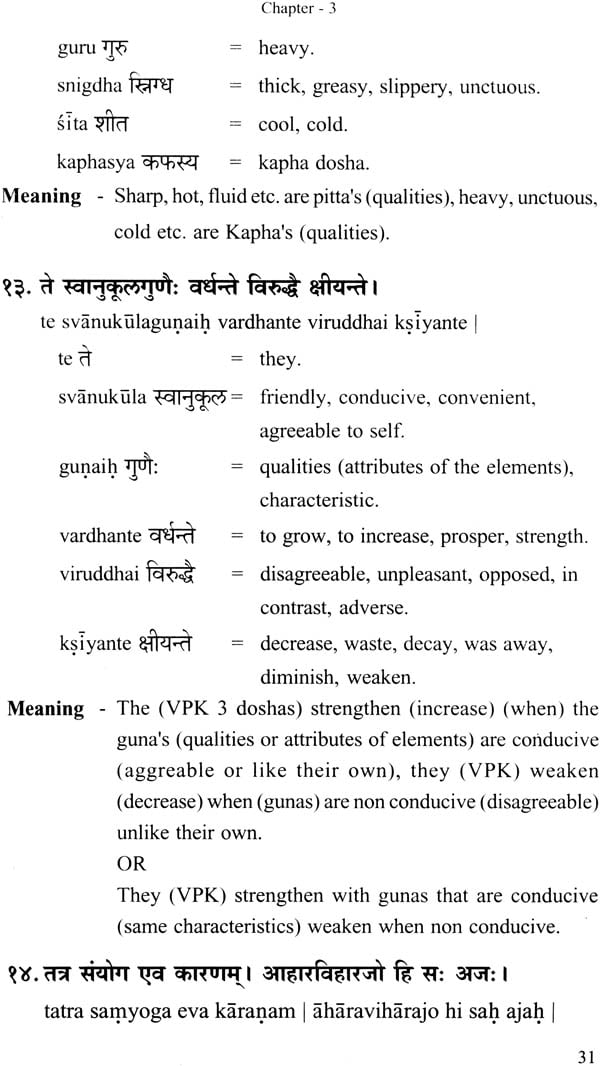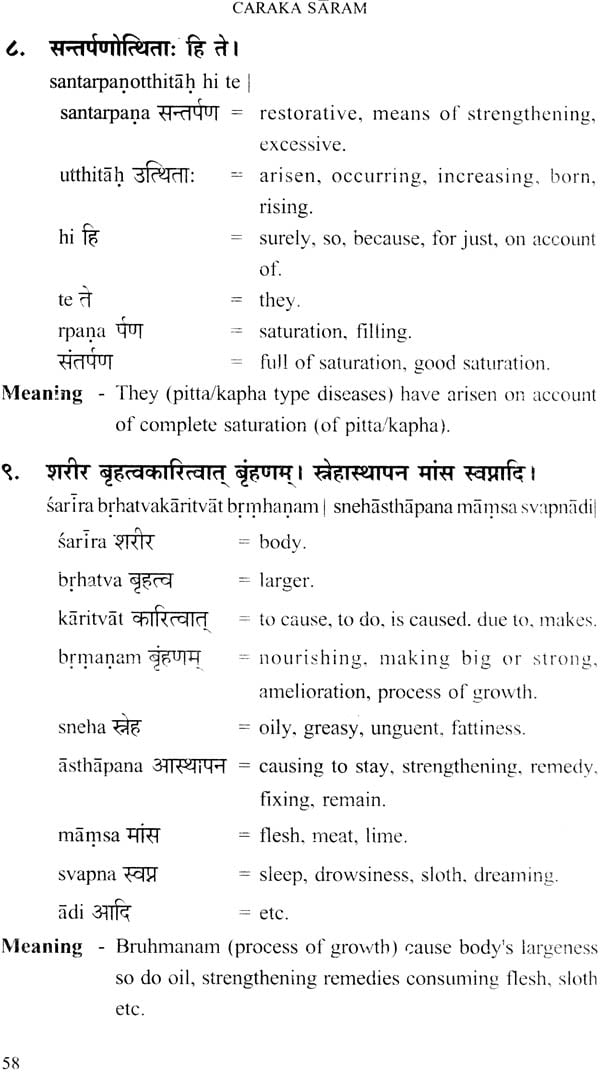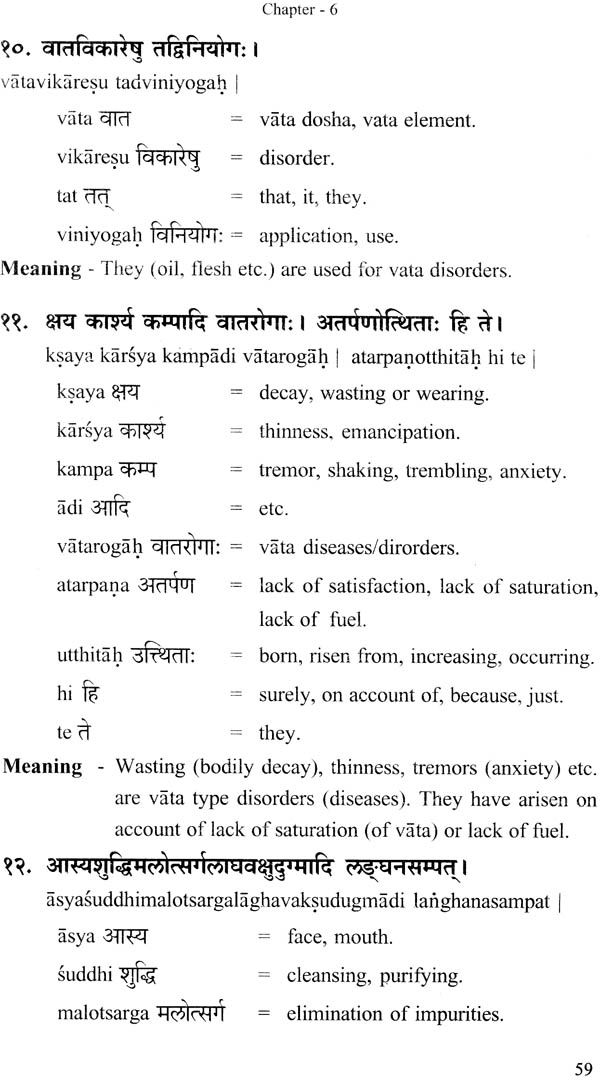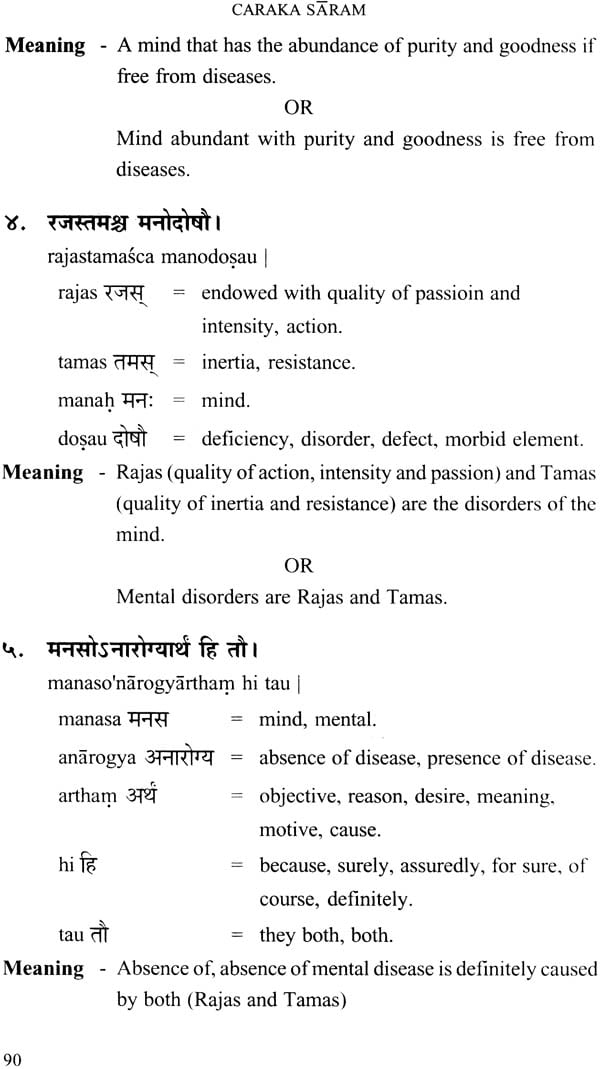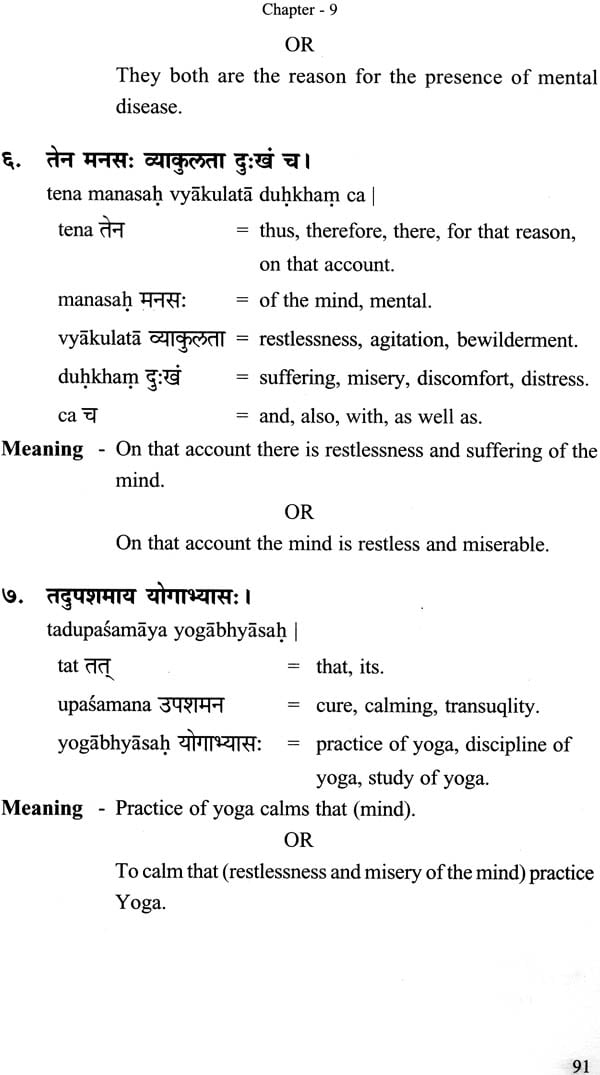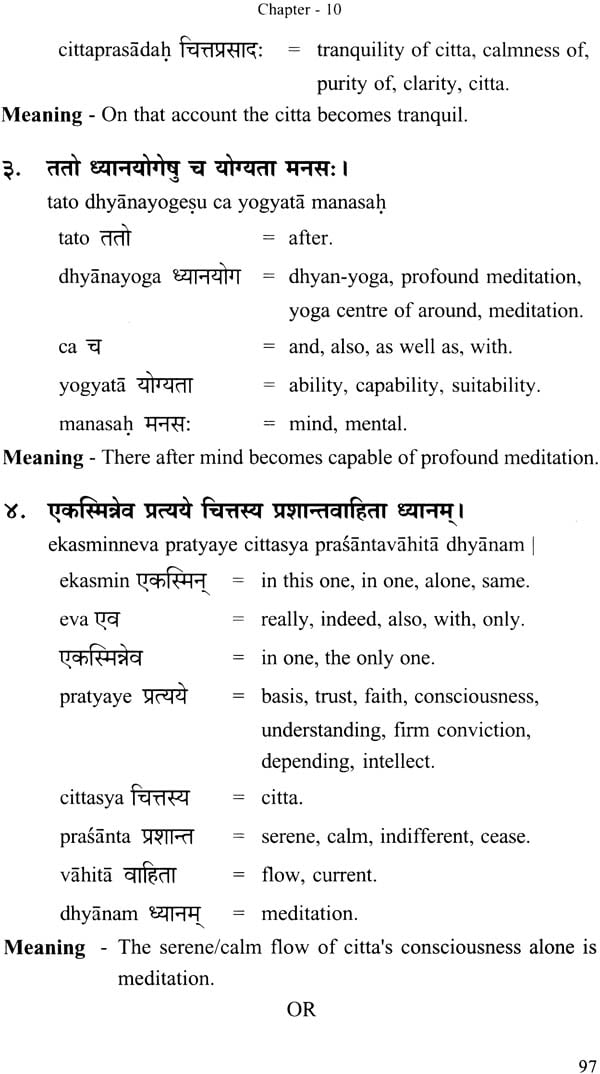
Caraka Saram (The Essence of Caraka)
Book Specification
| Item Code: | NAJ036 |
| Author: | Swami Digambarji |
| Publisher: | Kaivalyadhama Samiti Lonavla |
| Language: | Sanskrit and English |
| Edition: | 2014 |
| ISBN: | 818948589X |
| Pages: | 99 |
| Cover: | Paperback |
| Other Details | 8.5 inch x 5.5 inch |
| Weight | 130 gm |
Book Description
Preface
It has been a great honour for me to translate into English my teacher, Swami Digambarji's Charak Sara which was originally written in Sanskrit.
During a casual conversation with my father (Shri O. P. Tiwari) in the summer of 2013, I became aware that Charak Sara which had already been translated into Hindi needed to be translated into English. Having perused through the Hindi version, I realized that although this book contains the essence of Ayurveda just like Patanjala Yoga Sutras contain the essence of Yoga, it also explains Ayurveda from a point of view which is very beneficial to a Yoga practitioner, and hence primarily with the encouragement of my father (as always), the seed to translate the book was planted in me.
From what we know now, Swami Digambarji was an accomplished Ayurvedic Expert who was bestowed with the title of "Charak Tirtha", which was a rarity and he was also an accomplished astrologer, but he never mentioned about this phase of his life to anyone. At one point during his sadhana years he gave it all up.
I am not an expert in Sanskrit Language, but I can assure you, my effort into this translation has come from my heart. One word in Sanskrit could potentially have three, four or more meanings in English and I have made an honest and attempt to fill in the meaning that would fit the best in the full context of the Sutra, in addition, having spent most of my life in Swamiji's presence, I have used words in English that he probably would have used.
I cannot thank my father enough for his support and encouragement. I would also like to thank Dr. G Ramakrishna, for the critique and his suggestions, they have been very beneficial to me from my own learning perspective.
Foreword
It is a great pleasure to write the foreword of the book "Caraka Sara" at the behest of Shri O.P. Tiwariji. I was just wondering as to what I should write about this valued work.
I would like to begin with a few words on the author.
Swami Digambarji like his Guru Swami Kuvalayanandaji did not believe in self popularity. The book Caraka Sara book was written by him in 1932 and was published in Bhisakvilas which was edited by Shri Gangadhara Shastri Gune. Swamiji was awarded a rare honour of (Carakatirtha) as an acknowledgement of his capacity and original thinking. Somehow he believed that Maharsi Patanjali was the author of (Caraka Samhita). He wanted to tell that the origin of both Ayurveda and Yoga is rooted in the Sankhya Philosophy, and as such, they must have common ground to move together. The book, Charaka Sara, has 10 chapters and each chapter is a sincere attempt to prove that Kaivalya is the goal of both the sciences.
The first chapter is devoted to explain the meaning of Ayurveda and also to highlight the functions, constitution etc. which cause diseases thwarting cittaprasadana and it can be achieved by meditation. In this chapter he treats as to how cittaprasadana can be obtained through meditation. Thus he syncretised Yoga and Ayurveda.
In the IInd chapter, he explains in detail about the characteristics of Ayurveda.
In the IIIrd chapter he starts with the concept of spirituality. Body, its constituents, dosas, dhyana and others are explained later. Physiology is explained in Sanskrit terms which goes by Samkhya and it explains the nature of (guna) and its effect on the body. He explains how one's nature depend on equilibrium of the guna.
In the IVth chapter he starts with some disorders which cause death. The cause is imbalance in dosa. But the cure of the disorders can easily be traced.
He continues with his hypothesis on dosas and their role in maintaining health in the Vth chapter. Then the effect in terms of fever etc. are also depicted. He brings out the concept of drugless therapies in this chapter. V-10 and about (adravya). He talks of as drugless therapy.
In VIth and VIIth chapters he describes the method of therapy, but there are important aspects like samsodhana, pacana, upavasa, vyayama, abhyangas to achieve lightness of the body. He made remarks that each of them is based on five elements and described their importance in life magnificently.
In Chapter VIII he describes: What is the place? Where is the medicine is administered? Later he describes different usages of medicine at different points like ear, eyes, nose, mouth, arms, genital, skin etc. Further, he gives importance to pancakarma and finally he claims that when the body is purified growth become stable. (VIII-21)
In IXth and Xth chapter, he discusses the impurity and the purity of mind. Pure chitta is free from disorders. Gunas have their effects on body and mind both. Rajas and Tamas in excess creates mental problem, and later, he brings the importance of , Yoga' (IX-7). So also he defines various parts of Yoga from yama, niyama to samadhi. Practice of Yoga brings cittaprasada which accomplishes total health. After there mind becomes capable of profound meditation and by the practice of meditation samadhi (integration) is achieved. The experience of the samadhi leads to discrimination between source (purusa) and nature (prakrti), and that indeed is liberation. Yoga and Ayurveda should be simultaneously taken into account and that is highest object of human pursuit.
Thus we see Swamiji has created another form of sutra, I am sure that this book needs to become a part of Ayurveda curriculum and this will facilitate the synthesis of Ayurveda and Yoga.
In conclusion, I heartily congratulate Shri Sudhir Tiwariji for his effort to bring out the English translation of Caraka Sara and also I appreciate his devotion and love for his Guru Swami Digambarji, I pray to the Lord to give him good success and I wish him for the best future. I take the privilege to record my thanks to Dr. Raghavendra Bhat, Shri P.H. Raut and Shri Rajeshwar Mukherjee from Philosophico- Literary Research Department, Kaivalyadhama S.M.Y.M. Samiti, Lonavla, Mrs. P.L. Mandke, Administrative Officer of Kaivalyadhama and Shri Tanpure of ACE Printers, Pune for their active co-operation in bringing out the book in broad daylight. Finally I must reiterate that in this work Swamiji has tried to bring the total synthesis of Ayurveda and Yoga. It is a unique effort which nobody could think in 1930. He is like his Guru, who interpreted Yoga in the light of Science in 1920s. I ardently hope that the treatise will be welcomed in all the premier institutes of Yoga and Ayurveda by the erudite scholars in this field.
Contents
| Foreword | 5 | |
| I | Meaning of Ayurveda | 11 |
| II | Characteristics of Ayurveda | 19 |
| III | Explaining desa, dhatu, mala etc. | 25 |
| IV | Types of diseases and dits details | 34 |
| V | Symptoms and curing the diseases | 47 |
| VI | Process of lightness and growth in body | 55 |
| VII | Conecction between doshas and Five Elements | 62 |
| VIII | Types of medicines and Pancakarma | 78 |
| IX | Reson and types of Mind releted diseases | 89 |
| X | Human intigrity through Ayurveda and Yoga | 96 |

